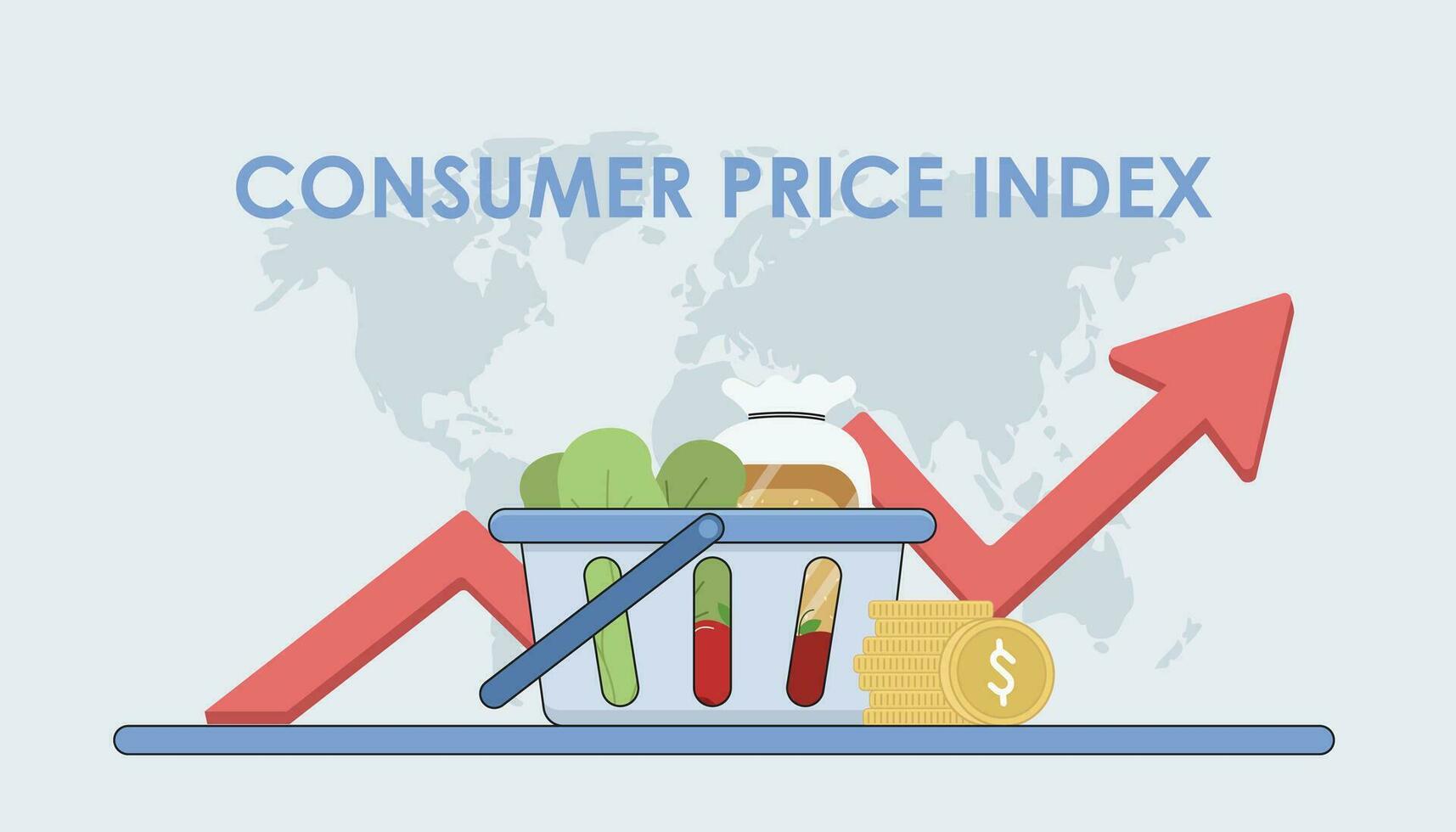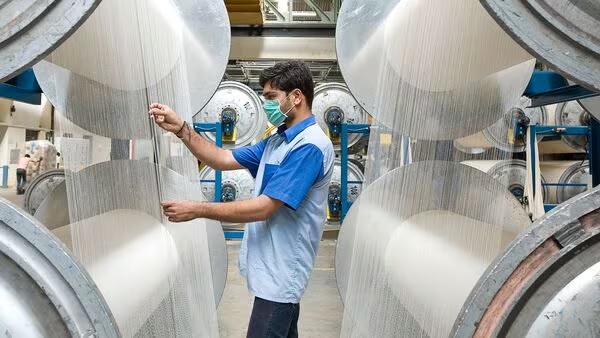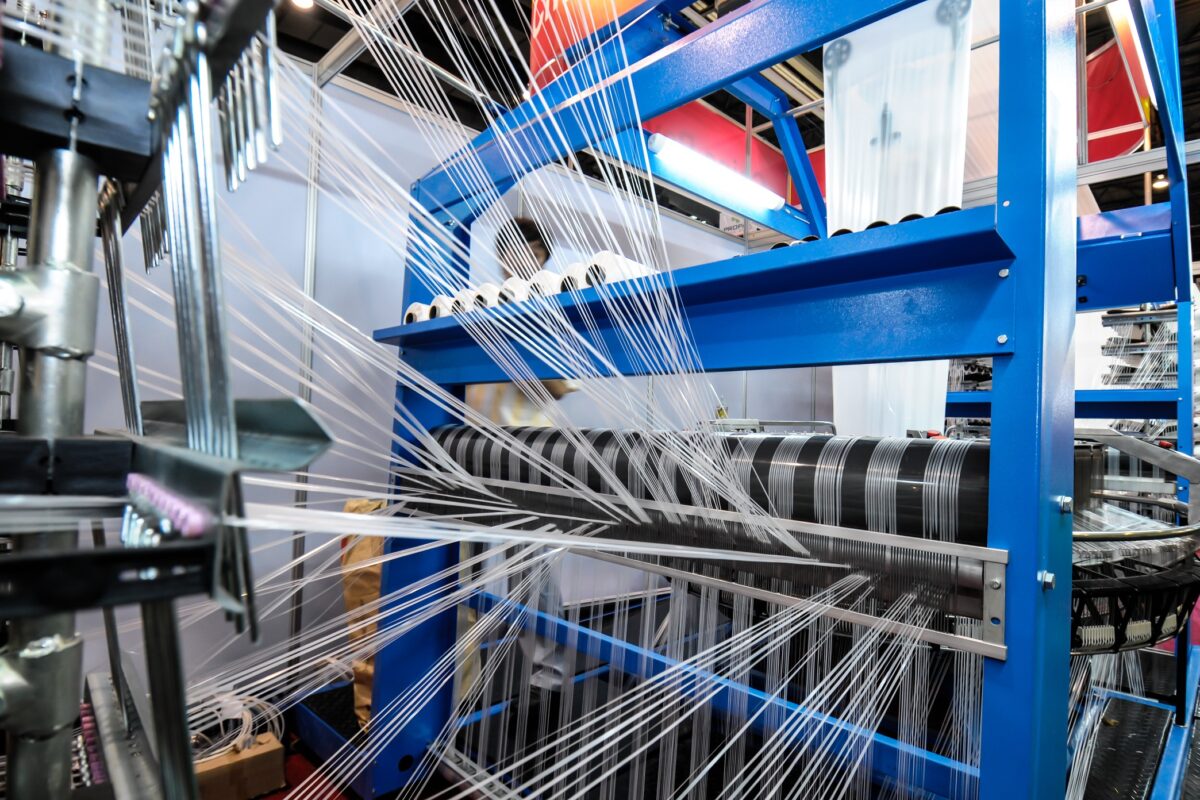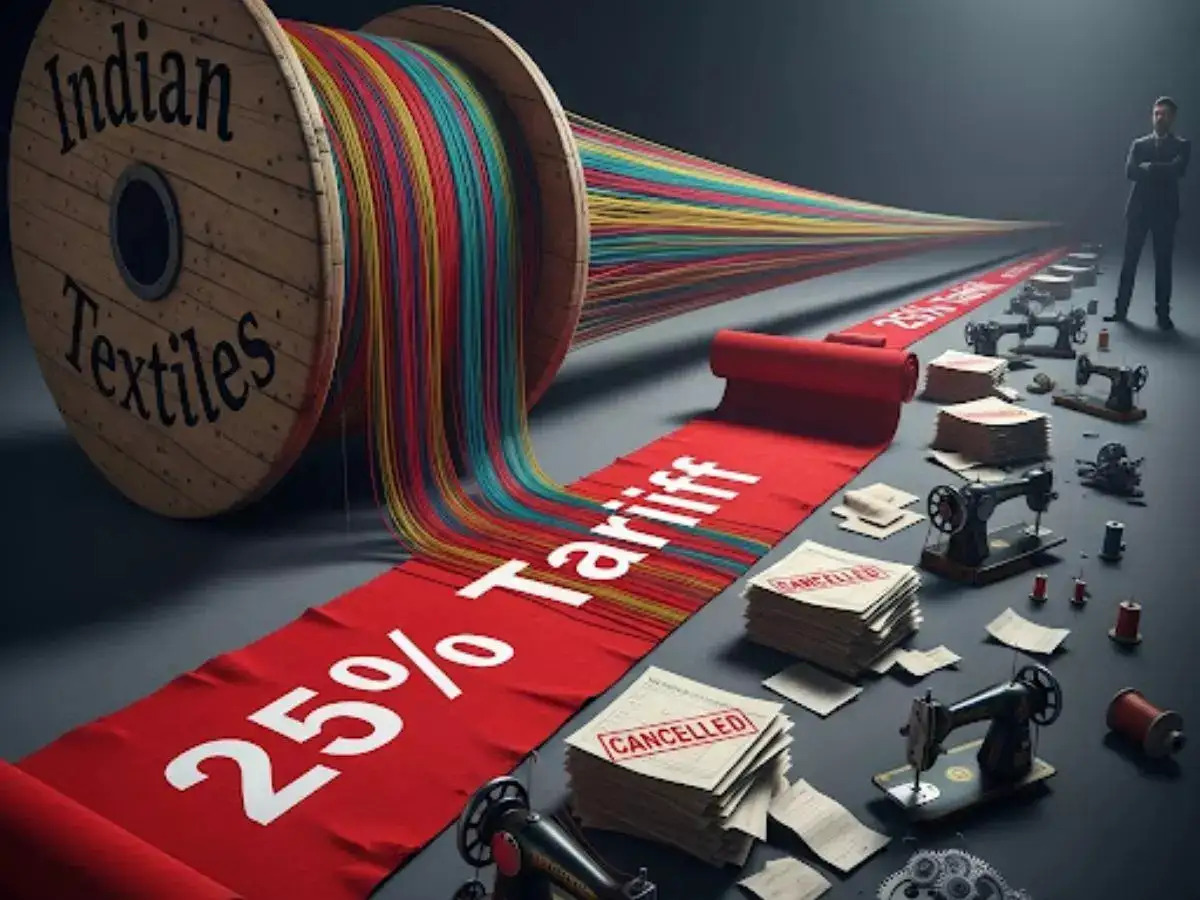FW

The Consumer Price Index (CPI), a critical barometer of economic health, reflects the average change in prices paid by urban consumers for a basket of consumer goods and services. While food and energy prices often dominate headlines, the subtle fluctuations within the apparel sector also weave a significant thread into the overall inflationary tapestry. Understanding the interplay between apparel prices and the CPI requires a nuanced analysis of the factors driving these costs and their subsequent impact on the index.
Reasons for apparel price fluctuations
There are several reasons for the dynamic nature of apparel prices, influencing their direct impact on the CPI.
Raw material costs: Cotton, wool, and synthetic fibers are subject to global supply and demand dynamics. Weather patterns, agricultural yields, and geopolitical events can drastically affect these prices. Rising oil prices, also directly impact the cost of synthetic fibers, which are petroleum-based.
Manufacturing and labor costs: Labor costs in manufacturing hubs, particularly in developing countries, play a significant role. Minimum wage changes, labor shortages, and evolving worker rights movements can impact production expenses. Increased automation and technological advancements can potentially offset labor costs, but these investments also carry their own financial implications.
Transportation and logistics: Global supply chains are intricate and vulnerable to disruptions. Shipping costs, fuel prices, and port congestion directly affect the final price of apparel. The rise of e-commerce has also increased the demand for faster and more efficient delivery, adding to logistical expenses.
Currency exchange rates: Apparel is often manufactured in countries with different currencies. Fluctuations in exchange rates can significantly impact import costs, leading to price adjustments for consumers.
Consumer demand and fashion trends: Seasonal demand, fashion trends, and consumer preferences play a crucial role. High demand for specific items or brands can lead to price increases, while oversupply can result in discounts. Fast Fashion creates a very rapid cycle of production and consumption, which can lead to rapid price changes, and increased waste.
Tariffs and trade policies: Import tariffs and trade agreements directly impact the cost of imported apparel. Changes in these policies can lead to significant price fluctuations.
Impact on the CPI
Apparel constitutes a portion of the CPI's market basket. While its weight may be smaller than that of food or housing, its fluctuations still contribute to the overall inflation rate.
Direct contribution: When apparel prices rise, they directly contribute to an increase in the CPI. Conversely, price decreases can help dampen inflationary pressures.
Indirect effects: Apparel price changes can also reflect broader economic trends. For example, rising raw material costs might indicate inflationary pressures across other sectors. Supply chain disruptions affecting apparel could signal similar issues in other industries.
Consumer sentiment: Changes in apparel prices can influence consumer sentiment and spending habits. If consumers perceive rising prices across the board, they may reduce overall discretionary spending, impacting economic growth.
Table: US CPI changes
|
Month & Year |
All Items CPI (seasonally adjusted % change from previous month) |
Apparel CPI (seasonally adjusted % change from previous month) |
|
Jul. 2024 |
0.1 |
-0.3 |
|
Aug. 2024 |
0.2 |
0.1 |
|
Sep. 2024 |
0.2 |
1 |
|
Oct. 2024 |
0.2 |
-0.9 |
|
Nov. 2024 |
0.3 |
0.1 |
|
Dec. 2024 |
0.4 |
0.1 |
|
Jan. 2025 |
0.5 |
-1.4 |
Source: U.S. Bureau of Labor Statistics (BLS)
The table shows that the apparel index does not always move in lockstep with the overall CPI. There are months where the apparel index increases while the overall CPI shows smaller increases, or vice versa. For example, in September 2024 there was a 1.0 per cent increase in the apparel CPI, while the overall CPI increased by 0.2 per cent. Also in January of 2025, while the overall CPI increased by 0.5 per cent, the apparel CPI decreased by 1.4 per cent. This volatility in apparel prices reflects the factors such as seasonal sales, changing fashion trends, and fluctuations in raw material and transportation costs. The data reinforces the point that while apparel is a component of the CPI, it also has its own unique drivers.
Are apparel prices generally in line with other products?
The relationship between apparel prices and those of other products is complex and varies. Apparel prices are often more volatile than those of essential goods like food and energy. Fashion trends and seasonal demands create fluctuations that are less pronounced in other sectors. However, apparel prices are also subject to the same macroeconomic forces that affect other products. Rising energy costs for instance, impact transportation and manufacturing expenses across various industries. The globalized nature of apparel production means that its prices are particularly sensitive to international trade and economic conditions, perhaps more so than some locally produced goods. The rise of e-commerce and fast fashion has had a much larger impact on apparel pricing than many other sectors.

The global luxury industry, synonymous with exclusivity and opulence, is changing as is revealed in Bain & Company's 23rd Annual Luxury Report. It highlights a nuanced landscape marked by shifting consumer behavior, regional disparities, and evolving market dynamics.
What is driving change?
Macroeconomic uncertainty: Global economic instability, due to geopolitical tensions and fluctuating markets, has affected consumer confidence. This uncertainty has led to more cautious spending, particularly on high-end discretionary items.
Pricing strategies: In recent years, luxury brands have implemented substantial price increases. While intended to increase brand prestige and offset rising operational costs, these hikes have, in some cases, alienated consumers, especially younger demographics who question the value proposition.
Evolving consumer values: There's a shift towards experiential luxury over material possessions. Consumers are increasingly prioritizing unique experiences such as travel and fine dining, reflecting a broader change in what is deemed valuable.
Current scenario of state of luxury
In 2024, the global luxury market saw a slight drop, with overall spending estimated at €1.48 trillion, which was 1 to 3 per cent decrease compared to 2023. This decline is viewed as a normalization following after robust growth in 2022 and 2023, with performance still exceeding pre-pandemic levels.
The personal luxury goods segment which includes fashion, accessories, and beauty products, saw its first drop in 15 years (excluding the COVID-19 period), declining by 2 per cent to €363 billion. This was due to lower consumer spending amid economic uncertainties and resistance to continued price increases.
Regional insights
Asia-Pacific: Japan emerged as a bright spot, leading global luxury sales growth due to favorable currency exchange rates and a rise in tourist spending during the first half of 2024. Conversely, mainland China faced a sharp slowdown, with a significant 18-20 per cent year-on-year decline in luxury spending. This is linked to low consumer confidence and increased overseas shopping as international travel resumed. In fact, the Chinese luxury market's downturn highlights the impact of economic uncertainty and consumer pushback against frequent price increases. Brands are now focusing on footprint consolidation and performance improvement rather than expansion.
Europe and Americas: These regions maintained stability, with Europe benefiting from tourist inflows and the Americas showing improvement as 2024 progressed.
Looking ahead, the personal luxury goods market is forecasted to grow moderately in 2025, with projections ranging between 0 and 4 per cent. This outlook assumes sustained growth in Western countries and the Middle East, a gradual recovery in China gaining momentum in the latter half of the year, and normalization in Japan.
Long-term projections are more optimistic, with expectations of 4 to 6 per cent annual growth leading up to 2030, potentially reaching a market value between €460 billion and €500 billion. This growth is expected to be driven by emerging markets and a growing middle class, introducing over 300 million new consumers to the luxury sector in the next five years.
Shifts in consumer behavior
A notable trend is a decline in luxury consumer base, which has shrunk by approximately 50 million individuals over the past two years. This reduction is particularly evident among GenZ consumers, whose advocacy for luxury brands has reduced. Factors contributing to this shift include economic uncertainty, price sensitivity, and a growing emphasis on sustainability and ethical consumption.
Despite the overall reduction, affluent consumers continue to make up a significant portion of luxury spending. However, there's a growing sentiment among these top-tier customers that their luxury shopping experiences have become less exceptional, prompting brands to reassess and enhance their value propositions.
Claudia D'Arpizio, a partner at Bain & Company and lead author of the report, emphasizes the critical juncture at which the luxury market stands: "Luxury spending has shown remarkable stability this year, despite macroeconomic uncertainty, largely driven by consumers' appetite for luxury experiences." She further notes the imperative for brands to "readjust their value propositions" in response to the evolving consumer landscape.
Thus as the luxury industry transforms it is being influenced by economic factors, shifting consumer preferences, and regional variances. Brands that adapt to these changes by embracing digital innovation, prioritizing sustainability, and enhancing customer experiences are poised to thrive in this evolving landscape. As the market recalibrates, a renewed focus on authenticity, value, and consumer engagement will be paramount in securing future growth.
Forever New, part of Apparel Group, has unveiled its much-anticipated Ramadan collection in Qatar and Kuwait, blending elegance with modest sophistication.
Designed for the Holy Month’s gatherings and celebrations, the collection features chic, flowy silhouettes with intricate embellishments.
Key pieces include the Ebony Embroidered Midi Dress, Kelly Pleated Cape Maxi, and Romie Embellished Pleated Maxi ideal for evening occasions.
The Aisha Embroidered Jacquard Kaftan, Parker Embroidered Palazzo Pant, and Parker Placement Print Top offer versatile styles for both day and night.
Crafted with luxurious fabrics and refined embroidery, the collection captures the spirit of Ramadan while maintaining a contemporary edge.
Whether for an Iftar or Suhoor, Forever New’s latest designs promise sophistication with a modern touch.
Explore the full collection at Forever New stores in Qatar and Kuwait to find the perfect outfit for the festive season.
Forever New, part of Apparel Group, has unveiled its much-anticipated Ramadan collection in Qatar and Kuwait, blending elegance with modest sophistication.
Designed for the Holy Month’s gatherings and celebrations, the collection features chic, flowy silhouettes with intricate embellishments.
Key pieces include the Ebony Embroidered Midi Dress, Kelly Pleated Cape Maxi, and Romie Embellished Pleated Maxi ideal for evening occasions.
The Aisha Embroidered Jacquard Kaftan, Parker Embroidered Palazzo Pant, and Parker Placement Print Top offer versatile styles for both day and night.
Crafted with luxurious fabrics and refined embroidery, the collection captures the spirit of Ramadan while maintaining a contemporary edge.
Whether for an Iftar or Suhoor, Forever New’s latest designs promise sophistication with a modern touch.
Explore the full collection at Forever New stores in Qatar and Kuwait to find the perfect outfit for the festive season.
ACIMIT, the Association of Italian Textile Machinery Manufacturers, has launched The Heritage, a virtual exhibition retracing over a century of Italian textile machinery history. Developed in collaboration with the Italian Trade Agency and supported by Italy’s Ministry of Foreign Affairs and International Cooperation, the website extends the successful exhibition showcased at ITMA 2023 Milan.
The Heritage offers an immersive digital experience, presenting a rich gallery of images contributed by numerous textile machinery companies. It highlights key moments, innovations, and industry leaders who have shaped Italian manufacturing. The website is structured into sections, including Machineries, Entrepreneurs, Factories, World, Companies, Exhibition, and ACIMIT. Visitors can explore historical machinery models, vintage factory images, and scenes from major trade fairs.
ACIMIT President Marco Salvade emphasized the project’s significance, stating, “The Heritage gives voice to the history, values, and technological evolution of Italian textile machinery. It is an evocative journey showcasing how the industry has evolved while maintaining its leadership through innovation and expertise.”
Far from being a static archive, The Heritage is designed as a dynamic platform that will continue growing. Companies are encouraged to contribute new images, ensuring the story of Italy’s textile machinery industry remains alive and evolving.
With nearly 300 companies in the sector, Italy remains a global leader in textile machinery, drawing strength from its legacy while advancing toward the future.

The reverberations of Trump administrations latest tariffs have extended far beyond American borders, casting a long shadow over the Indian textile and apparel industry, a vital cog in the nation’s economic machinery. As a key exporter to the US market, India's textile sector is now passing through a complex maze of trade barriers, grappling with the potential consequences of these new measures.
The evolving tariff landscape
The US administration's decision to implement higher tariffs is rooted in a desire to rectify perceived imbalances in global trade and safeguard domestic industries. This strategy hinges on the concept of reciprocal tariffs, where duties are mirrored to match those imposed by other nations on the US. This approach directly challenges countries like India, where existing tariff structures have long been a source of contention. While the tariff measures span various sectors, textiles and apparel stand out due to the substantial trade volume between India and the US.
A multifaceted challenge for Indian textiles
The ramifications of these tariffs for the Indian textile and apparel industry are far-reaching and multifaceted. The most immediate impact is the cost escalation for Indian exporters. Higher tariffs translate to increased prices for US importers, potentially dampening demand for Indian goods. This, in turn, erodes the competitiveness of Indian textiles and apparel in the US market, as they become less attractive compared to products from countries with more favorable tariff arrangements.
The intricate web of supply chains is also disrupted, forcing Indian manufacturers to explore alternative markets or restructure their operations. Small and medium enterprises (SMEs), which constitute a significant segment of the Indian textile industry, are particularly vulnerable, lacking the resources to absorb increased costs or navigate the intricacies of new trade regulations. While the situation presents hardship, a potential for trade diversion exists. If other large exporters to the US are also heavily taxed then some of the market share may shift to India. However, this is dependent on many fluctuating economic factors. Furthermore, analysis by India Ratings and Research (Ind-Ra) underscores the potential for a significant negative impact on India's GDP growth, highlighting the broader economic implications.
Industry and government initiatives
In response to the US tariffs, the Indian textile and apparel industry, in conjunction with the Indian government, is implementing a range of strategic measures. A key focus is on diplomatic engagement, with the Indian government actively negotiating with the US to mitigate the impact of the tariffs and seeking mutually agreeable solutions to trade concerns. Recognizing the need to diversify markets, Indian exporters are exploring opportunities in Europe, Asia, and other regions to reduce their dependence on the US market. Simultaneously, the industry is also focusing on increasing its competitiveness by improving product quality, efficiency, and sustainability. The government is also providing crucial support through export promotion schemes and infrastructure development initiatives. Industry leaders are advocating for ‘zero-for-zero’ tariffs, a proposal that would eliminate tariffs on apparel exports for both countries.
Adapting to a shifting trade landscape
The long-term repercussions of the US tariffs on the Indian textile and apparel industry remain uncertain. The industry must prepare for a dynamic and evolving trade landscape. The outcome of ongoing trade negotiations between India and the US will be a pivotal factor. The ability of Indian exporters to successfully diversify their markets and enhance their competitiveness will also be critical. The global economic environment will play a significant role in shaping the industry's future. The Indian textile and apparel industry, by adopting a proactive and adaptive approach, can navigate these challenges and secure its position in the global marketplace. The industry must continue to innovate, improve efficiency, and seek new opportunities to ensure its long-term sustainability and growth.

The Trump administration's decision to impose sweeping tariffs on imports from China, Canada, and Mexico has sent ripples of uncertainty throughout the global economy. This move has sparked fears of an all-out trade war, with potentially devastating consequences for businesses and consumers worldwide. However, amidst this turmoil, some countries are expected to benefit from the shifting trade landscape.
The tariffs and their impact
The US has imposed a 25 per cent additional tariff on imports from Canada and Mexico, and tariffs on Chinese goods have been doubled from 10 to 20 per cent. These actions have triggered a wave of retaliatory measures. China has responded with tariffs on a range of US agricultural products, including soybeans, pork, and cotton. Canada has announced tariffs on US goods worth billions of dollars, and Mexico is prepared with its own retaliatory measures.
These tariffs and counter-tariffs are expected to have significant economic consequences. Businesses and consumers will face costs escalation due to higher prices on imported goods. Global supply chains will be disrupted, affecting manufacturing and distribution. There is a risk of job losses in industries reliant on international trade, and financial markets are likely to experience heightened uncertainty and volatility.
Textiles and apparel caught in the crossfire
The textile and apparel industry, with its complex global supply chains, is particularly vulnerable to the tariffs. The US Fashion Industry Association (USFIA) has voiced deep concern, emphasizing the interconnectedness of the Western Hemisphere's textile and apparel supply chain. They warn that tariffs will harm American farmers, retailers, and consumers. For instance, US cotton is a crucial input for Mexico's textile production. The industry already faces high tariff rates, and additional tariffs will exacerbate cost pressures.
On the other hand, India's textile industry sees the US-China trade war as a potential opportunity to expand its market share in the US. With tariffs on Chinese goods rising, Indian exporters could gain a competitive edge. Industry experts suggest that India should pursue a ‘Zero-for-Zero’ trade agreement with the US to further boost exports. This potential benefit for India extends beyond finished garments. With disruptions to the supply of raw materials like cotton from the US, India could also see increased demand for its own cotton exports.
Companies like Abercrombie & Fitch have already indicated that the tariffs will negatively impact their profit margins. The company has warned of softer demand and increased costs due to tariffs and other economic factors. The rise in shipping costs is an additional burden for many businesses.
The impact is being felt beyond the immediate players in the trade war. Bangladesh, for example, is seeing a rise in garment export orders, attributed in part to the US tariff policies that are making Chinese and Mexican exports more expensive. This is giving a boost to Bangladesh's economy, which is facing internal challenges. Vietnam, another major textile and apparel exporter, is also likely to benefit as businesses seek alternative sourcing destinations to avoid higher tariffs on Chinese goods.
A call for dialogue and solutions
Industry associations are calling for dialogue and solutions to mitigate the negative impacts of the tariffs. The National Council of Textile Organizations (NCTO) has expressed concern over the tariffs on Mexico and Canada, highlighting the importance of the North American textile and apparel co-production chain. They are also calling for the closure of the de minimis loophole, which allows small shipments to enter the US duty-free.
The American Apparel & Footwear Association (AAFA) has warned of the ‘crushing burden’ of the tariffs on American businesses and consumers. They emphasize the uncertainty and instability created by the tariffs, which could undermine the economy. They are seeking discussions with government officials to establish guardrails and promote smart trade policies.
Global economic implications and supply chain disruptions
The US tariff actions have triggered concerns about a potential global trade war, with far-reaching consequences for the world economy. The tariffs are disrupting intricate global supply chains, affecting businesses across various sectors. They could lead to a decline in global trade, hindering economic growth and development. Furthermore, the trade disputes could escalate geopolitical tensions between the US and its trading partners.
The disruption to supply chains starts with raw materials. The tariffs on Chinese goods, including cotton, will impact the availability and cost of fibers for textile production. This will have a ripple effect throughout the supply chain, affecting yarn manufacturers, fabric producers, and ultimately garment manufacturers. Companies may need to seek alternative sources for raw materials, potentially leading to increased costs and logistical challenges.
The long-term impact of the US tariffs is uncertain. Much will depend on how the situation evolves and whether the US and its trading partners can reach a resolution. There is hope that negotiations will lead to a resolution of the trade disputes. In the meantime, businesses and consumers should prepare for continued uncertainty and volatility in the global economy.
While the tariffs present challenges for many, they also create opportunities for countries like India and Vietnam to increase their share in the global textile and apparel market. The ability of these countries to capitalize on these opportunities will depend on their ability to adapt to the changing landscape and meet the demands of the global market.
United Arab Emirates-based fashion retailer Apparel Group, which distributes over 80 brands like Adidas, Asics, and Levi’s, exposed nearly 2.4 million files due to a misconfigured AWS bucket, reports Cybernews.
The leaked files included shipping labels with customers names, addresses, phone numbers, and order details. Cybernews researchers, who found the exposed data in October, warned that cybercriminals could use it for phishing and malware attacks.
Experts urge companies to enhance AWS security by restricting access, monitoring logs, and using AWS Key Management Service. Cybernews warns that cloud misconfigurations remain a major cybersecurity risk, emphasizing the need for stricter data protection measures.
Australian fashion retailer Ally Fashion has shut 51 stores and laid off 250 employees after being forced into liquidation by the Federal Court.
The brand, founded in 2001, operated 160 stores and an online shop before its financial troubles. Liquidators Jeff Marsden and Duncan Clubb of BDO Australia were appointed on February 28, citing outstanding rent as a key issue.
To improve viability, they closed underperforming stores, with Queensland losing 19 locations, followed by New South Wales (11), Victoria (8), South Australia (7), and Western Australia (6).
The remaining 109 stores continue under a licence agreement with a related entity of director David Dai. Marsden stated that the closure and restructuring efforts aim to secure the brand’s future.
Ally Fashion, known for its fast-fashion offerings, had previously thrived but struggled amid rising costs. The retailer joins others, including luxury brand Harrolds and designer Dion Lee, in succumbing to economic pressures. The cost of living crisis has significantly impacted consumer spending and retail jobs across Australia.
Big Lots is making a comeback after last year’s bankruptcy, with the first wave of store re-openings set for April 10. Variety Wholesalers, which acquired 200 locations from liquidator Gordon Brothers, is overseeing the relaunch.
Nine stores across Kentucky, Louisiana, Mississippi, North Carolina, Tennessee, and Virginia are undergoing cleaning, remodeling, and re-merchandising ahead of their reopening. Work began on March 3 to prepare these locations.
Jeff King, Variety Wholesalers vice president of sales and marketing, confirmed that a second wave will follow on May 1, featuring 70 more stores. Additional re-openings are planned through early June.
Big Lots, which closed all 870 stores in December, is getting a second chance under Variety Wholesalers, known for operating discount chains like Roses and Bargain Town. States such as Alabama, Florida, Georgia, Ohio, Michigan, Pennsylvania, South Carolina, and West Virginia are expected to see re-openings in later phases.
The retailer’s revival aims to bring back budget-friendly shopping while preserving jobs. With its phased relaunch, Big Lots is poised for a fresh start in the discount retail sector.












